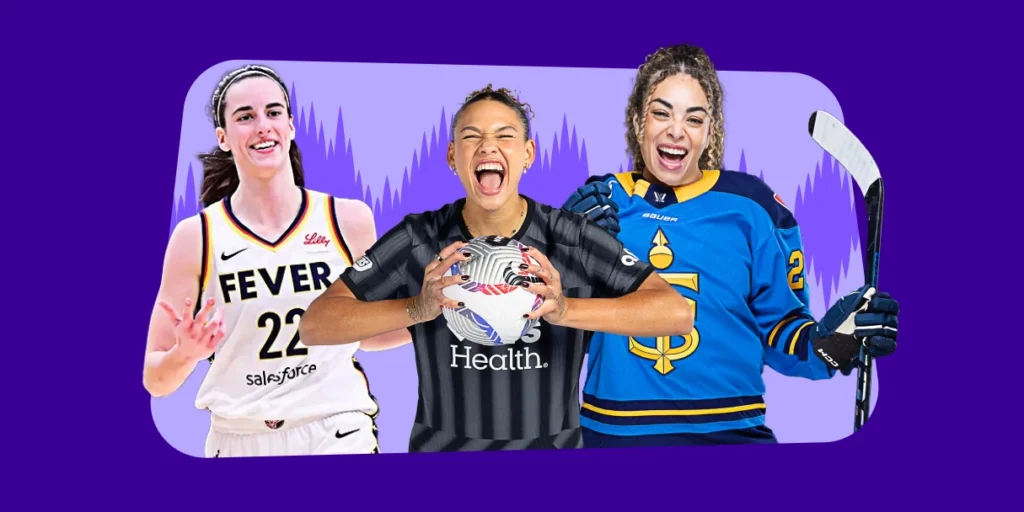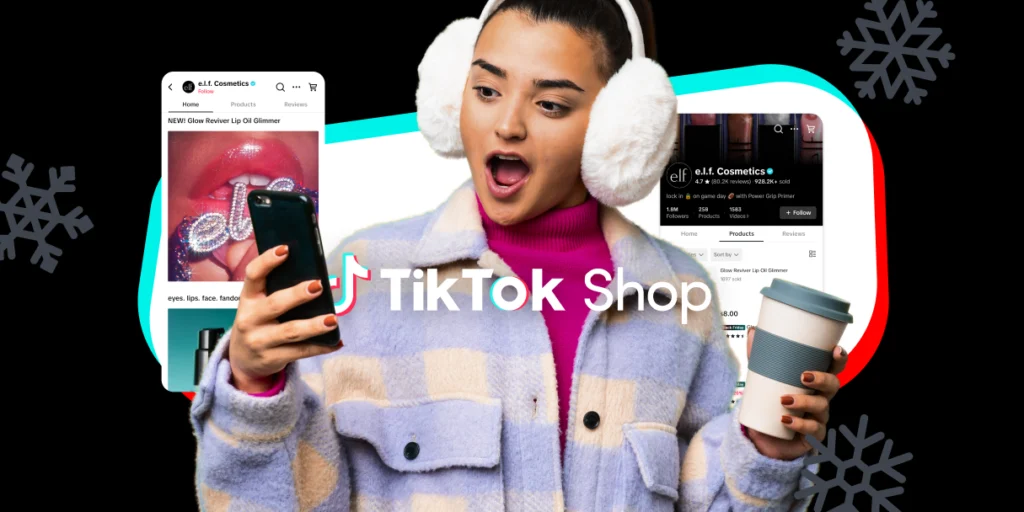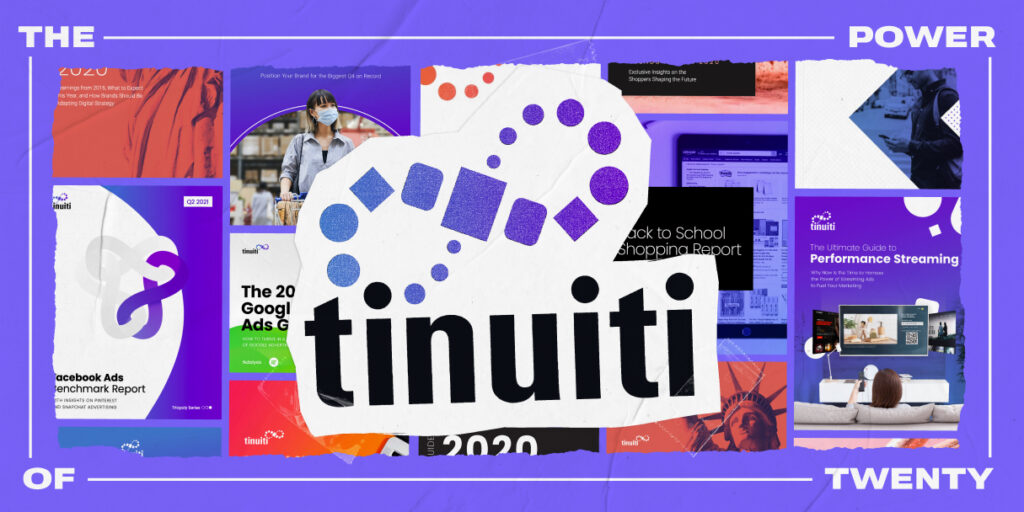Remarketing Lists for Search Ads (RLSA) was first released in 2013 and has since become one of the most powerful retargeting features of Google AdWords.
We covered the basics of RLSAs back in 2016, and now we’re back with a guide on advanced RLSA tactics and practices that our Paid Search experts use to drive conversions and get the most out of AdWords campaigns for retail brands.
“Conversion rates are substantially higher for audiences that are familiar with your brand or have been to your site when compared to normal users. If you want to focus on the users behind the searches and not just the keywords themselves — that’s where RLSA becomes valuable.”

-Nick Manessis, Lead Retail Search Manager at CPC Strategy
What is RLSA?
Remarketing lists for search ads (RLSA) is a feature that allows retailers to customize their search ad campaigns for people who have previously visited their site, and tailor their bids and ads to these visitors when they’re searching on Google.
When potential customers leave a site, remarketing lists help retailers connect with those shoppers while they continue to search for what they need on Google.
Jump To A Section
1. Collect Valuable Audience Data With RLSAs
2. Leverage RLSAs For Non-branded Campaigns
3. Use RLSA and non-RLSA for Non-branded Campaigns
4. Find and Target Intent-driven Website Audiences
5. Target Your Competitors
6. Tiered RLSA Bidding Strategy
7. Tailor Your RLSA Ad Copy With Ad Customizers
1. Collect Valuable Audience Data By Adding RLSA to Your Campaigns
Before you can start leveraging creative audiences and bid modifiers with RLSA, you need to have RLSA data to work with.
This is why it’s important to include RLSAs in your Search and Shopping campaigns.
Nick Manessis says,
“You must first build out audiences/RLSAs in either AdWords or Google Analytics and then include them into your Search and Shopping campaigns so they accumulate data. Once you have data to work with, you can use these lists for segmenting and adjusting your bids.”
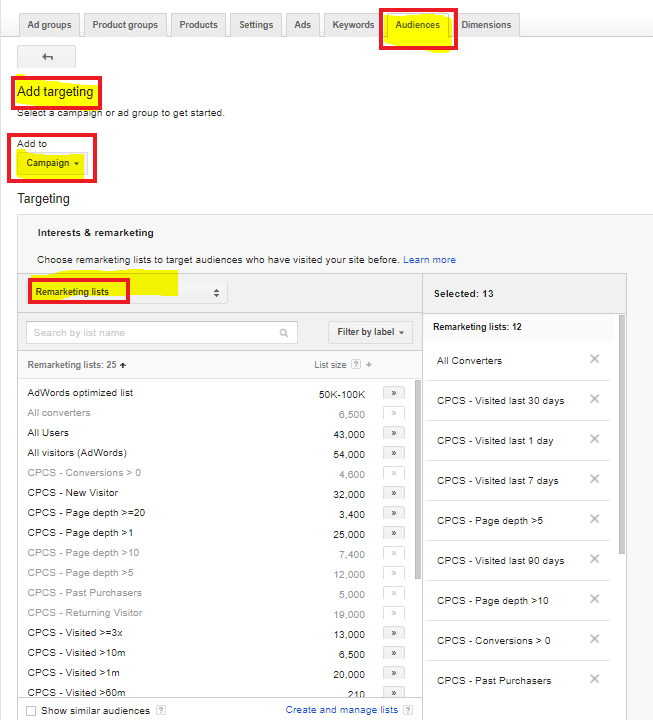
“You can create audiences from URLs or specific events on the site, such as visiting a specific product page. I find it quicker to upload audiences from Google Analytics as opposed to AdWords.”

-LaBroi Walton, Senior Retail Search Manager
Whether you plan on using RLSAs to modify bids or not, it’s always a good idea to include them into your campaigns for collecting valuable audience data.
2. Leverage RLSA for Non-branded Campaigns
Many advertisers are afraid of going after non-branded keywords because they typically don’t perform well.
But non-branded searches are still important; they’re critical for reaching upper-funnel customers.
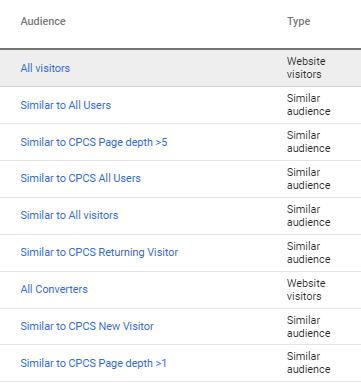
With RLSAs you can layer a non-branded campaign with site visitors or people familiar with your brand so that your ads only display for non-branded searches for users most likely to convert.
Nick says,
“Instead of missing out on all of non-branded searches, you can make sure you are getting a portion of non-branded for users that are more likely to convert by bidding for RLSAs only. Because they have been to your website before, they are more likely to convert.”
Nick’s tips: To make sure you aren’t spending ad dollars on random, unfamiliar users, use ‘Target-and-Bid,’ which is named ‘Targeting’ in the new AdWords interface, to only target users in your audience lists and no one else.
3. Use Both RLSA and Non-RLSA For Non-branded Campaigns
You can use RLSA and non-RLSA audiences together in a campaign to capture both familiar consumers and those who may not know your brand at all.
“I create a non-branded campaigns with both RLSA and non-RLSA audiences, with very low keyword or product bids, but very high RLSA bids.”
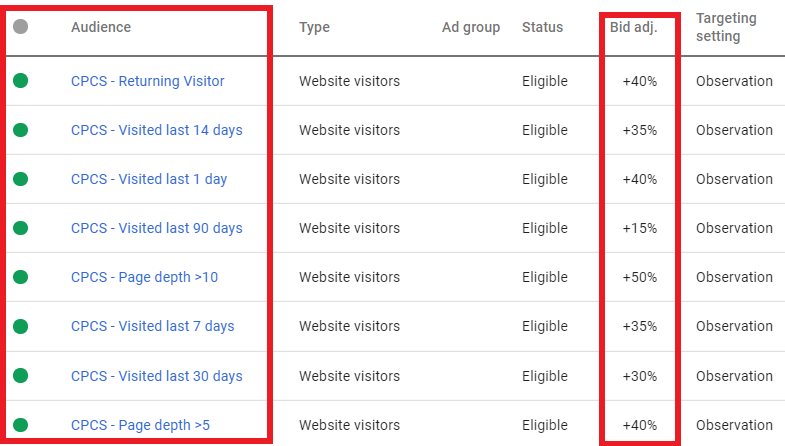
“I may set the bid at 30 cents for let’s say running shoes, but I can increase it 3x or even 4x that amount for someone that is on my RLSA” Nick explains.
“It isn’t crazy volume, but you are still leaving it open for Google to serve your ads in off-hours or in times when it’s affordable. But I’ll pay for the top spot if it is in front of someone who has been to the site before. They are more likely to convert.”
4. Find and Target Intent-driven Audiences
Some of your most valuable audiences are those based on site behavior, or what LaBroi calls intent-driven events.
“We have a list of set audiences that we start off with and then expand from using AdWords and Google Analytics. The idea is that you use site behavior and intent-driven events on the site to build out these audiences.“
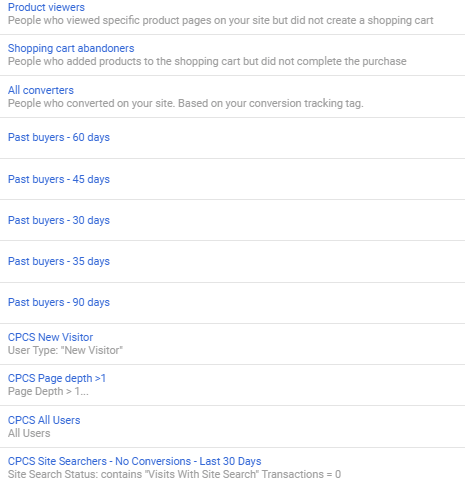
These behaviors or events signal a greater likelihood to convert:
- Time spent on website
- Pages visited
- Products viewed
- Email signups
“Somebody that visits a product page, signs up for your newsletter, and other intent-driven metrics can be useful for retailers. RLSA allows you to set up different audiences for these different site behaviors.”
According to LaBroi, the key is to:
1. Find out what those intent-events are on your site
2. Use that information to create audiences to target against
3. Bid more aggressively for these audiences
“I will double down bids on these audiences because the conversion rate is typically much higher.”
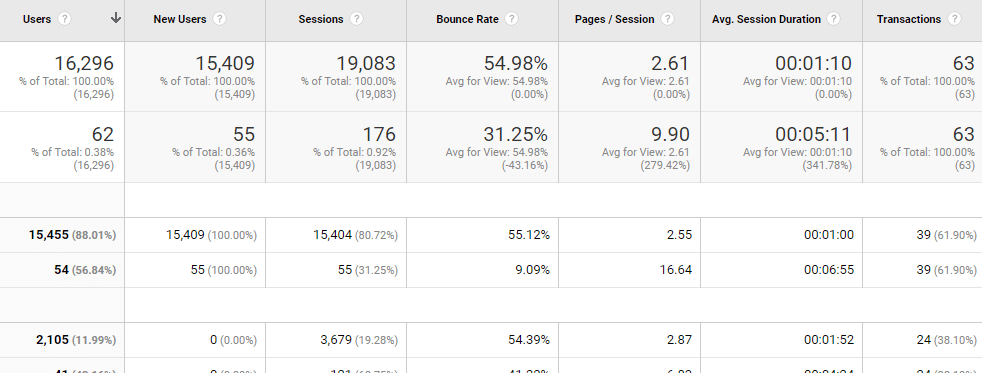
Intent-driven metrics can be unique to the retailer, says LaBroi.
“For example, if a retailer is focused on converting new users, they may set up a metric around how often new users convert over a set period. This can found in Google Analytics where you can see how many sessions a new user takes on average to convert.”
5. Target Your Competitors Using RLSA
No retailer wants to lose customers to the competition. With RLSA you can target familiar users who are also searching for your competitors.
LaBroi says,
“If they’ve been to your site before and are searching your competitor, they could be comparison shopping. If you can create an ad that speaks directly to someone considering a competitor, you might be able to capture the purchase.”
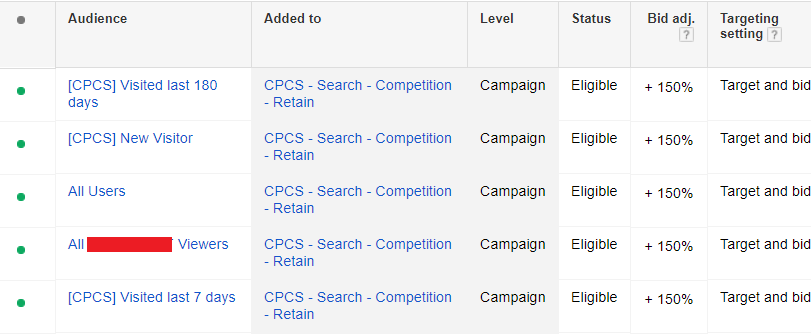
Nick says,
“If I want to capture users searching for other competitors I can use RLSA to capture these consumers before they settle on the competition. It’s also a branding play to associate your brand with keywords your competitors are ranking for.”
6. Tiered RLSA Bidding Based On Audience Values
Not all audiences are created equal.
A tiered bidding strategy allows you to prioritize your spend toward most qualified RLSA audiences for maximum campaign ROI.
“Someone that visited five different product pages on your site and someone who visited and then bounced warrants different bid modifiers” explains Nick.
“Some actions signal that a user has more intent and is lower funnel than others. You want to make sure these users see your ads for that conversion. Time on page, pages visited, etc.”
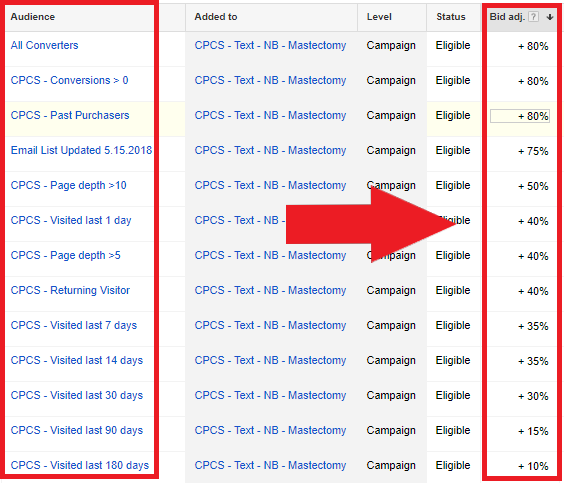
“With RLSA you can organize your bid modifiers in a tiered structure to prioritize spending to a granular level. For example, increasing your bid modifiers for users who have visited one, two, and five pages of your site by 30%, 50%, and 70% bid modifiers.”

-Derek Forde, Retail Search Manager at CPC Strategy
7. Leveraging RLSA with Ad Customizers
Ad customizers allow you to tailor your ad copy for different audiences, and when used with RLSA you can laser-target your ad copy for each RLSA audience.
“For example, you can create a message that is unique to cart abandoners or past purchasers. Tailoring the ad copy to make it unique to each RLSA audience can improve the relevance of the ad and boost your conversions.”

-Chris Pezzoli, SeniorRetail Search Manager at CPC Strategy
Instead of having to create a new campaign and separate ad for each copy, you can use ad customizers with your RLSAs to create multiple ads within one ad group. It’s much more scalable for larger and more sophisticated campaigns.
“With ad customizers you can tailor your copy to emphasize brand loyalty or a discount, which can drive specific RLSA audiences to convert. It’s all about improving your ability to drive lower funnel conversions and then recapture them.”
Want to learn more about Remarketing Lists for Search Ads?
Check out:
Remarketing Lists for Search Ads Available in Google Shopping
and
Why Advanced RLSA Audience Targeting Is Essential For Your Business
You Might Be Interested In





